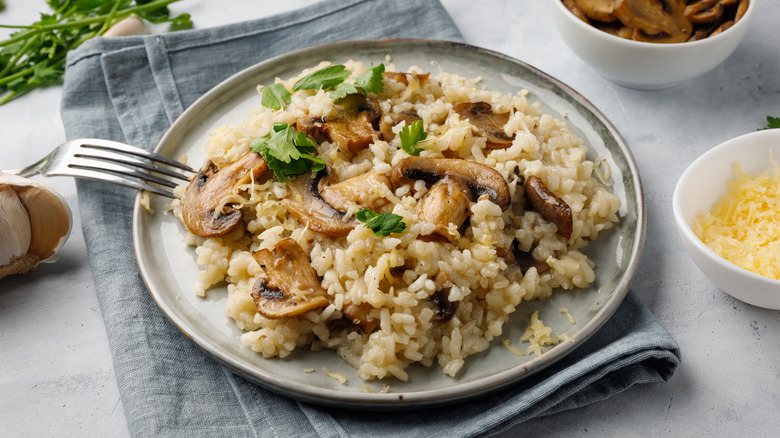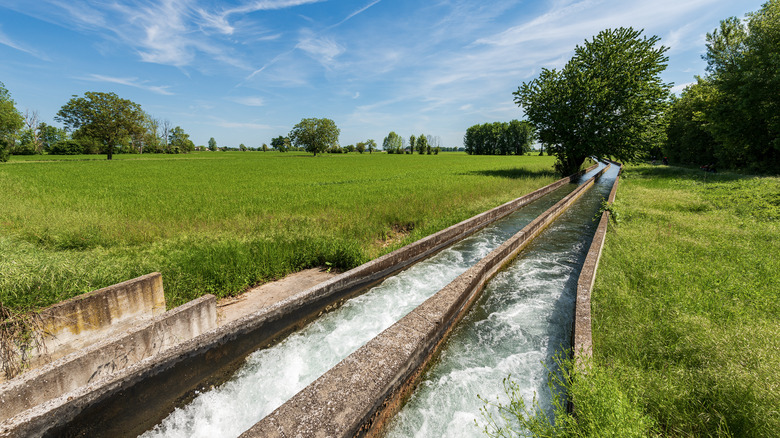The Price Of Risotto May Soon Skyrocket. Here's Why
If you're craving a creamy, Italian comfort food dish, risotto is the way to go. The dish is made from short-grain rice, which is consistently stirred while broth or stock is gradually added. Common additions include mushrooms, onion, garlic, and Parmesan cheese. Risotto first appeared sometime in the 14th century, when rice was introduced to Italy and Spain (per Trip Trivia). Italy proved to be the perfect growing grounds for short-grain rice, and it quickly became a primary food source for the country.
Rice shoots grow in water, and need to be submerged about five inches deep, states California Rice. If the water is lower than five inches, or dries up completely, the rice plants may not get the nutrients and sunlight they need; high temperatures and reduced rainfall can create a drought, causing devastating effects for crops.
The Po Valley in Italy — the leading rice-growing region in Europe, according to France 24 — is now facing a concerning drought, which is impacting the amount of rice that is able to be harvested.
Shortages make prices spike
As the Po Valley continues to face devastating droughts, the farmers who grow their crops there are facing crop shortages, reports The Washington Post. The droughts have dried up the river where arborio rice (most commonly used for risotto) is grown. Even the irrigation canals that typically bring water from surrounding bodies have reportedly dwindled to a trickle.
Dario Vicini, a farmer from Zeme village, told France 24 that this drought is the fault of climate change, and the valley has not seen significant rainfall since December 2021. He estimated that his income has dropped by 80 to 90 percent. Vicini even told France 24 he was able to ride his motorcycle through the field — something he would never have been able to do under normal conditions.
With less rice available to be harvested, the expected shortage could cause an increase in risotto costs. So, the next time you go out to eat and notice a price hike at your favorite Italian restaurant, the Po Valley drought could be the culprit.

